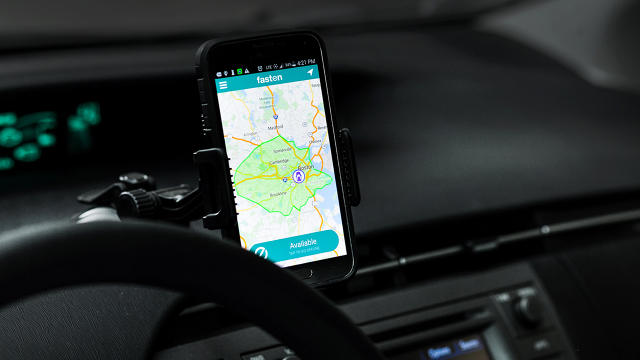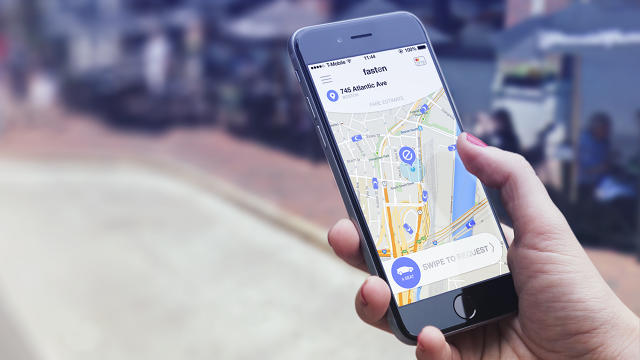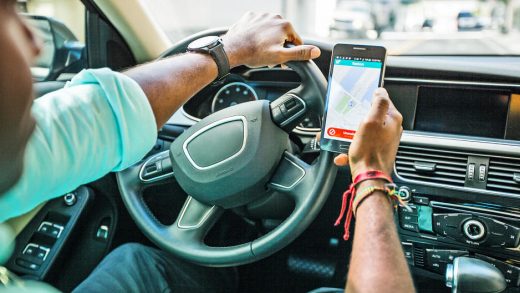The Ride-Share Startup That’s Competing With Uber And Lyft By Charging $1
Uber and Lyft have recruited thousands of drivers in hundreds of cities to use their personal cars to drive strangers around for money. The service provided is between the driver and the rider, but Uber, currently valued at over $60 billion, takes a percentage from each ride a driver completes with the company’s app. Now, a new company called Fasten is trying to change this standard in the ride-sharing world.
Fasten only charges drivers a $1 flat fee for every ride completed with their app. The company’s founders believe that the driver is providing the service, and the app is just a platform on which riders and drivers can find each other. Because of that, they see both riders and drivers as paying customers.

“At the end of the day, we sell a piece of information to a driver who is the actual service provider,” says Fasten cofounder and COO Vlad Christoff. “They move them in the physical world from point A to point B. We sell a piece of information to the driver that someone needs a ride.”
Fasten launched in Boston in October 2015. Uber and Lyft both operate in that city, which is considered one of the top five ride-sharing markets, according to the cofounders. So far, Fasten’s business is doing well enough that it is recruiting more drivers and planning on opening a drivers’ lounge.
Cofounders and CEOs Kirill Edvakov and Christoff aren’t concerned that they won’t make a profit. They might not turn a $60 billion valuation, but their business model is based on volume. As long as they get more drivers and are operating in a place where people need rides, they believe they can make money.
“Before, drivers didn’t have a choice,” says Edvakov. “All those companies used to charge huge percentages from drivers. Right now, people do have this choice . . . It’s profitable on the ride level. We still charge a fee. It requires more volume, but we understand that volume will be here.”

The cofounders started the company with private investments of their own and are currently in the middle of a series A funding round.
Wirbin Vasquez, a Boston driver, chose to drive for Fasten instead of Uber and Lyft because he heard that it treats drivers better. Vasquez has lived in Boston for 16 years and earned money by doing food deliveries before switching to Fasten. “You can make as much money as you want,” he says. “You just gotta put yourself in it and not slack around.”
Outside of the flat fee model, Fasten doesn’t implement a surge charge feature like its competitors, but it does offer its Boost option when rides are in high demand. So instead of forcing customers to pay a surge charge, when they and everyone else need a lift home at 2 a.m. on a Saturday, Boost lets riders decide if they want to pay more to get a driver faster. Drivers also get certain discounts on the $1 flat fee if they complete 20 or 100 rides in a given day.

Fasten expanded to Austin in June when Uber and Lyft stopped operating there. (They decided to leave after an unsuccessful fight against the implementation of a new law requiring drivers to complete fingerprinted background checks.) The two companies’ departure left a huge hole in the market of one of the fastest growing cities in the U.S. Fasten was among the smaller ride-sharing competitors that popped in to fill the void. Replicating its approach in Boston, Fasten launched a new operation halfway across the country in only two weeks.
“We started to get emails from both riders and drivers saying it’s horrible down there, and they want us to launch [in Austin],” Edvakov says. “It took us 10 days to get to number one [there], and we never looked back.”
While the company doesn’t disclose exact numbers of drivers, riders, or rides completed, they did say that 75% of all passengers in Austin have become repeat customers, meaning they’ve completed more than one ride with the app.
According to the Austin riders that Fast Company spoke with, no one app has become as efficient or well known as Uber or Lyft, but Fasten and another ride-sharing service called Fare are popular. Fare only operates in Austin right now, and it offers some features that other ride-sharing apps haven’t ventured into yet. You can rate drivers, like on Uber and Lyft, but you can also select preferred drivers and choose who you’d like to pick you up. Riders can also preschedule rides, a feature Uber has recently rolled out as well.
Kyle Hoskins has lived in Austin for six years and is a regular user of Fasten and Fare. He works as a software developer and business process consultant. “I live downtown, so for off-peak wait times, instead of one to three minutes for a shared ride from Uber or Lyft, it’s generally two to five minutes for a nonshared ride from Fare or Fasten,” Hoskins says.
Now that ride sharing is a transportation option, one that more people are coming to rely on, Fasten’s cofounders are optimistic that if riders and drivers are given a choice between which service to choose, they’ll choose a more affordable option. They believe their model better reflects what the sharing economy is actually supposed to be.
“The sharing economy is about sharing resources, products, and services directly with each other,” Edvakov says. “It’s not about individuals sharing a part of their money with a huge corporation.”
Fast Company , Read Full Story
(43)














